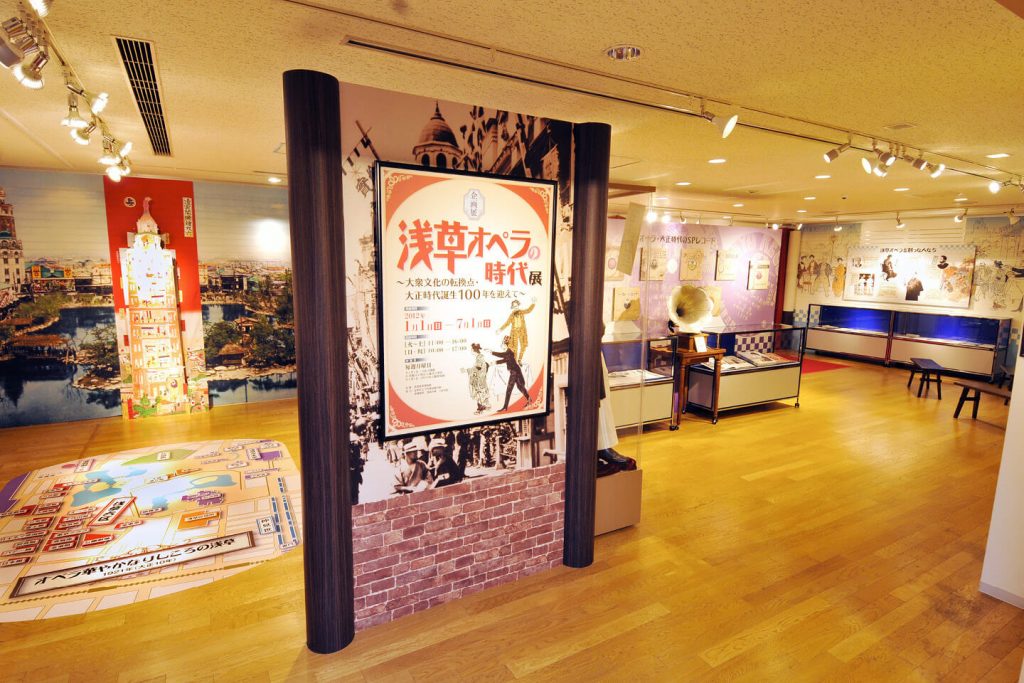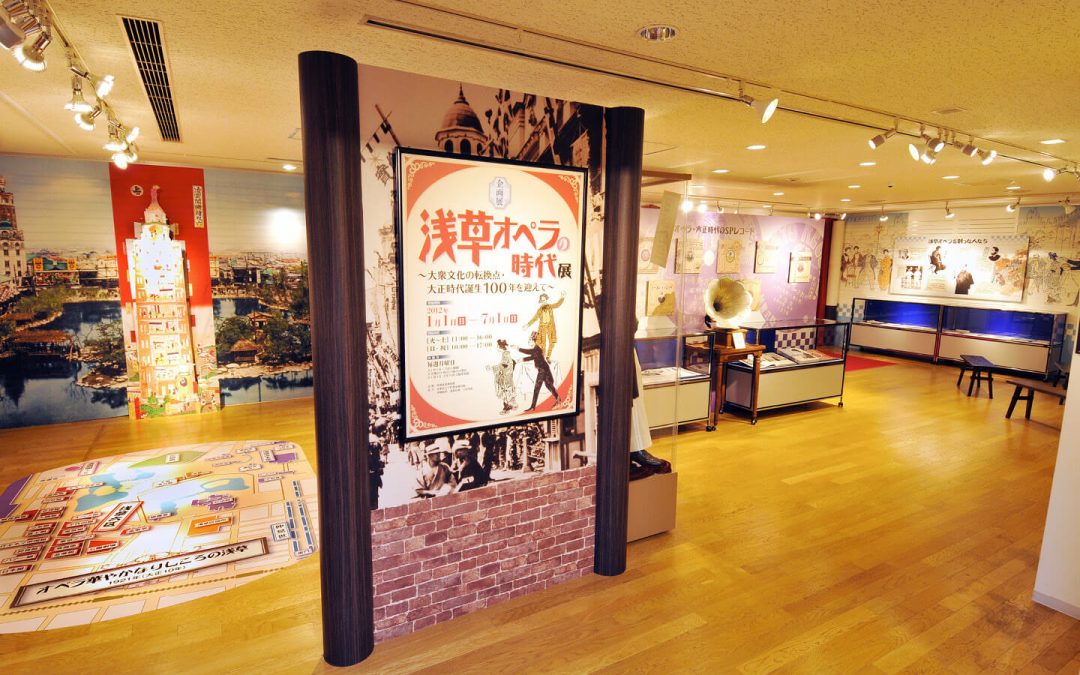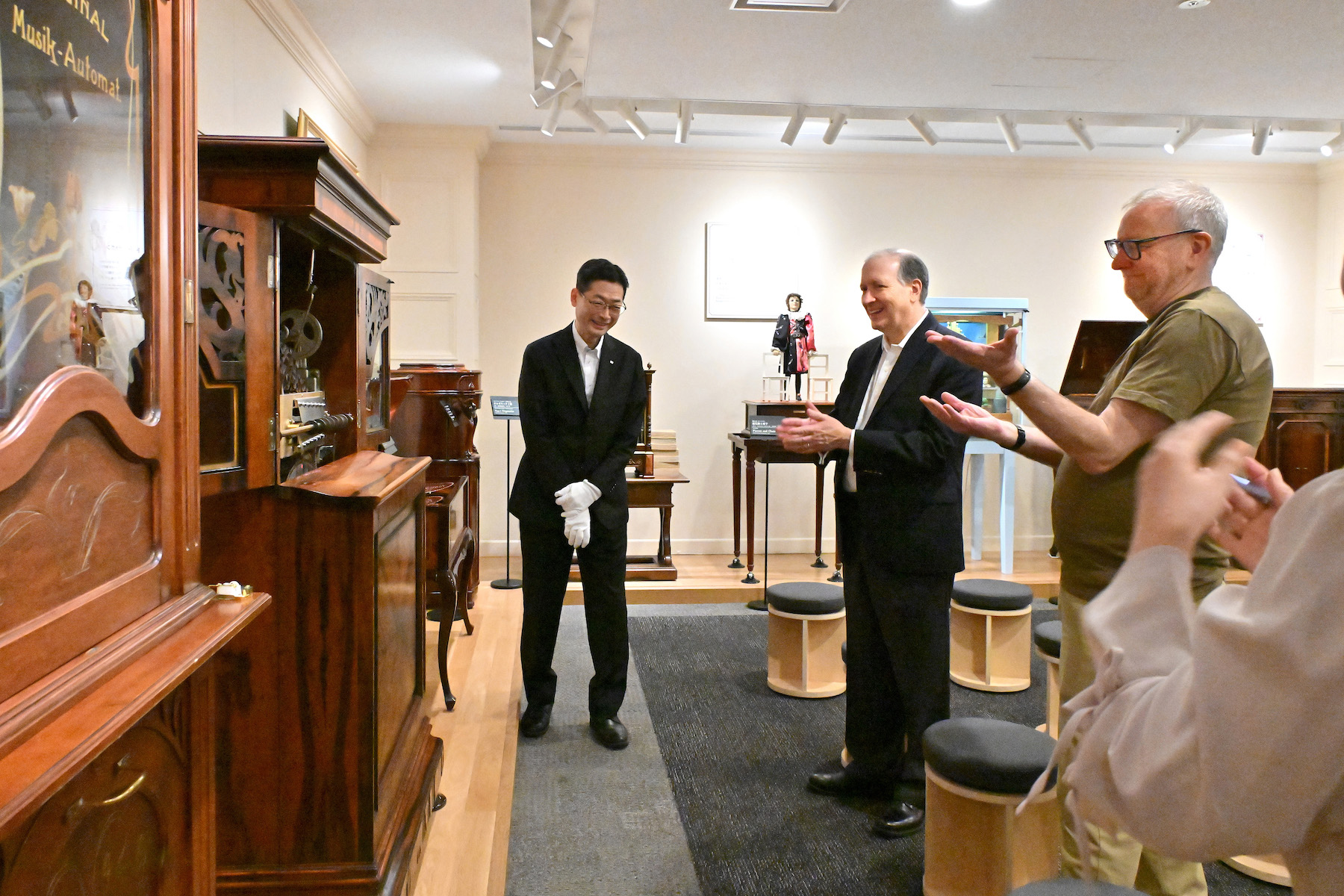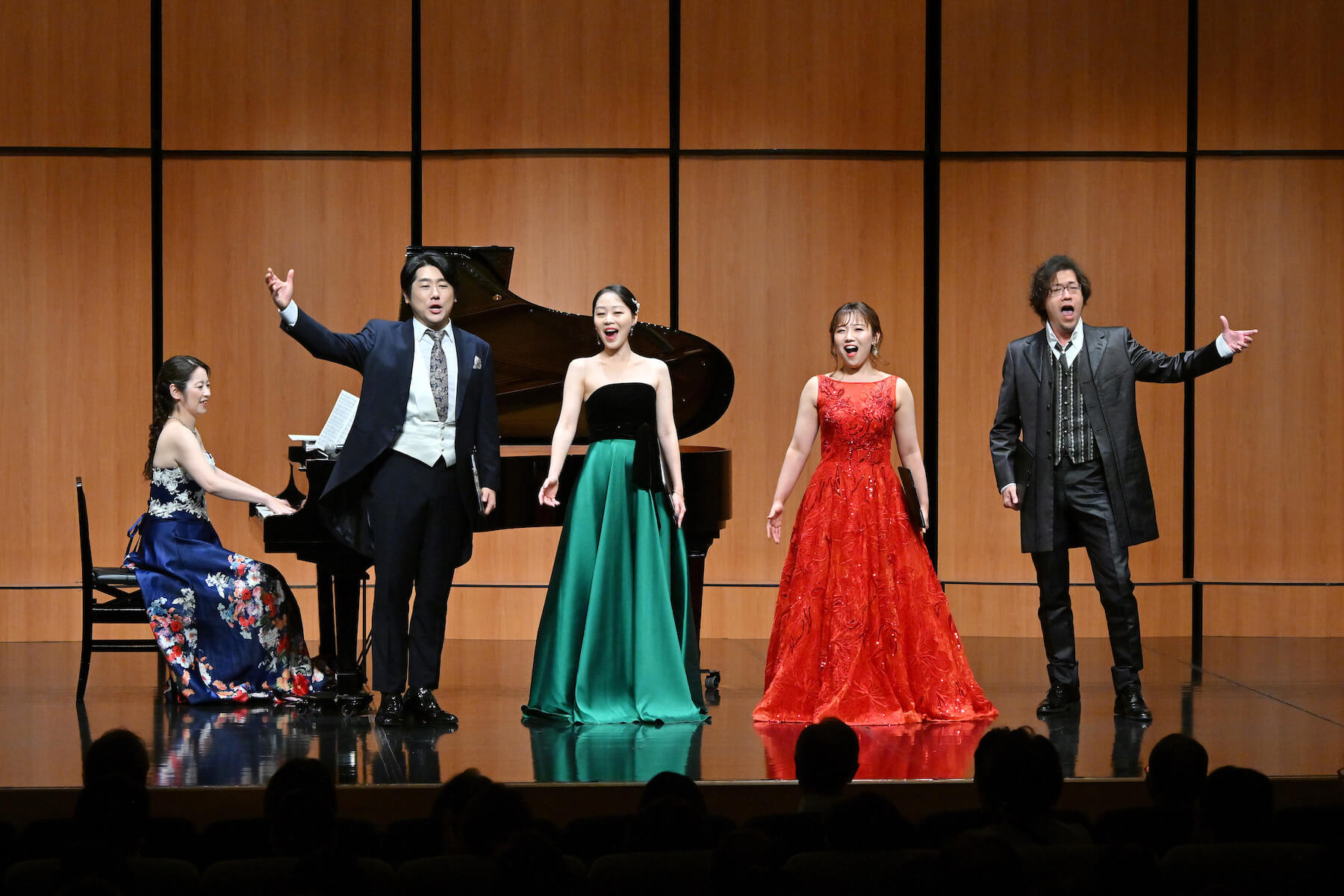 Poster welcoming visitors to the Asakusa Opera exhibition
Poster welcoming visitors to the Asakusa Opera exhibitionJuly 30, 2012 marks the 100th anniversary of the beginning of the Taisho (“period of great righteousness”) era in Japan. This all-too-brief period of Japanese history followed the chaotic post-revolutionary Meiji era and preceded the Showa era, when militarism and nationalism took hold. In contrast, the Taisho era saw the beginnings of a liberal movement known as the Taisho Democracy.
At the beginning of the Taisho era, after Japan had opened its doors to the West, people were exposed to Western culture and musical ideas; awareness grew of opera and operetta as artistic expressions of modern Western culture. Over time, these Western musical influences were developed into a unique form of Japanese operetta in Tokyo’s sole entertainment district of Asakusa. Thus, Asakusa Opera was born in the early 1900s, an expression of Taisho Romanticism. By the 1910s, many opera houses and theatrical companies had been established.
Both the language and context of this new form of entertainment were easily understood, and Asakusa Opera was accessible to ordinary citizens at affordable prices. It enjoyed a wide audience and rapidly achieved remarkable success. However, it lasted only until the Great Kanto Earthquake struck in 1923, after which it faded as if a fleeting dream of the Taisho era.
From January 1 through July 1, 2012, the Min-On Music Museum is featuring a special exhibition entitled The Romantic Era of Asakusa Opera, which introduces its history, scenes from the opera houses, stories of popular stars, their costumes, songs and performances, copies of scripts and scores, as well as original posters, flyers and programs. Through the media of panels, pictures, video and displays, visitors are invited to feel the excitement of the Asakusa Opera boom and experience the romanticism of the Taisho era.







